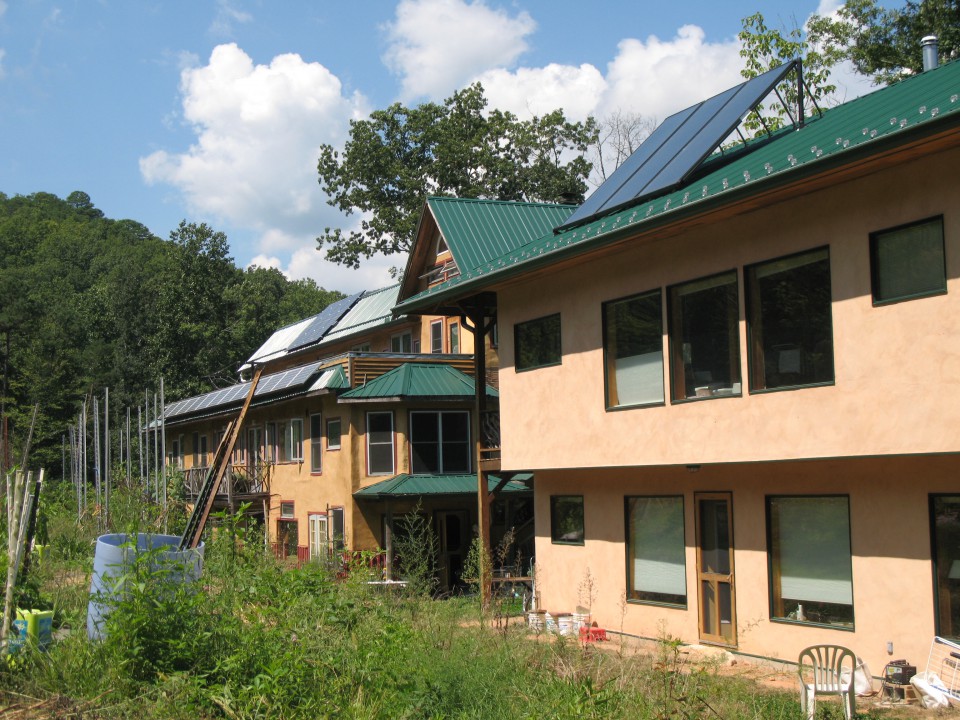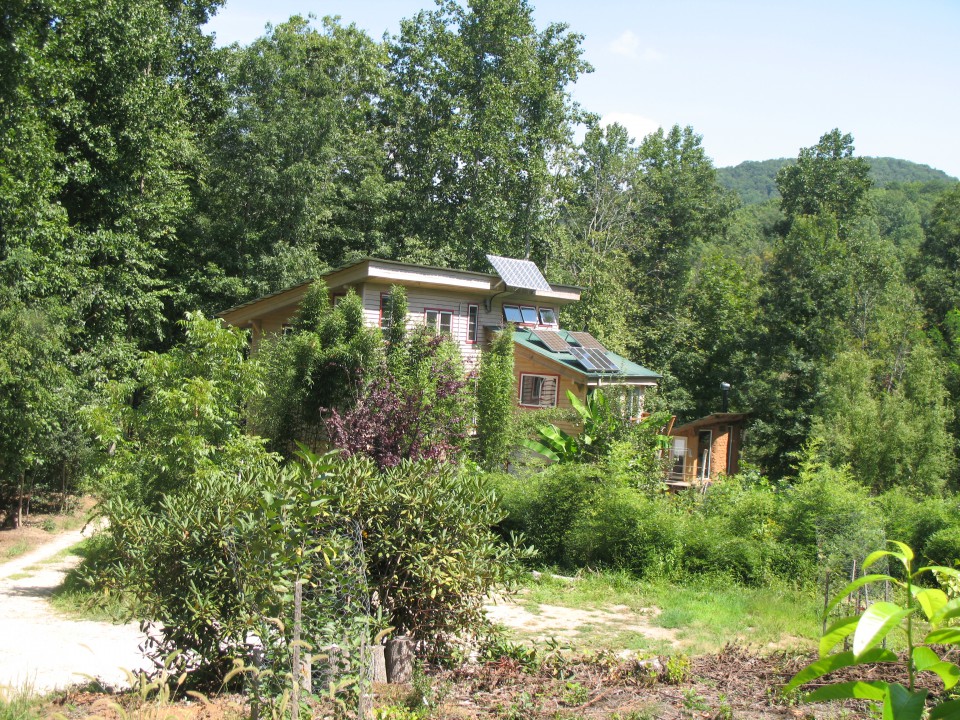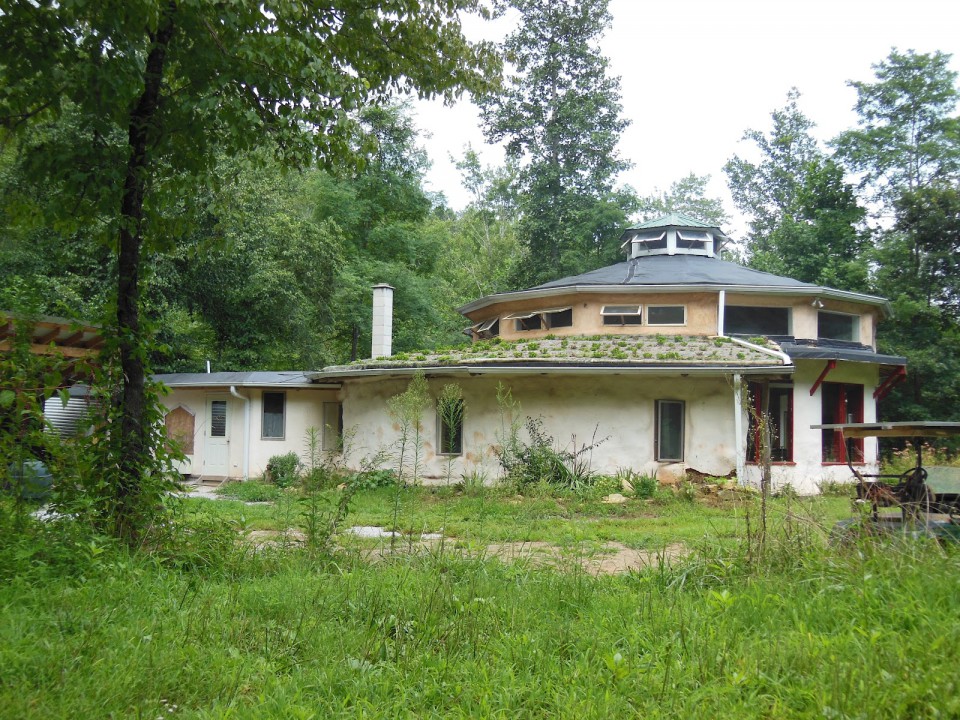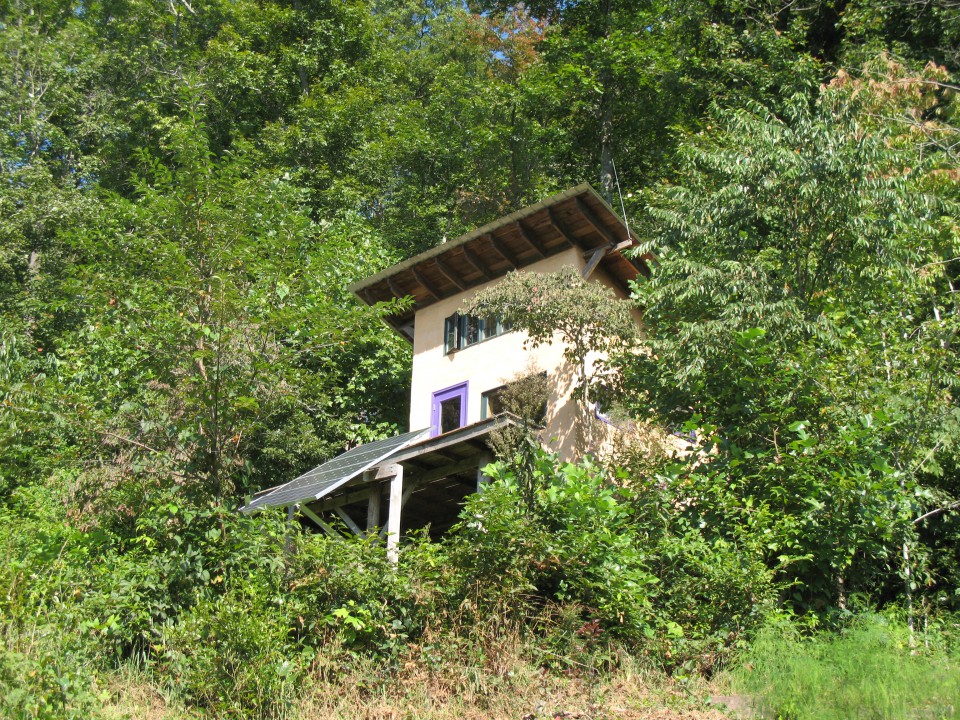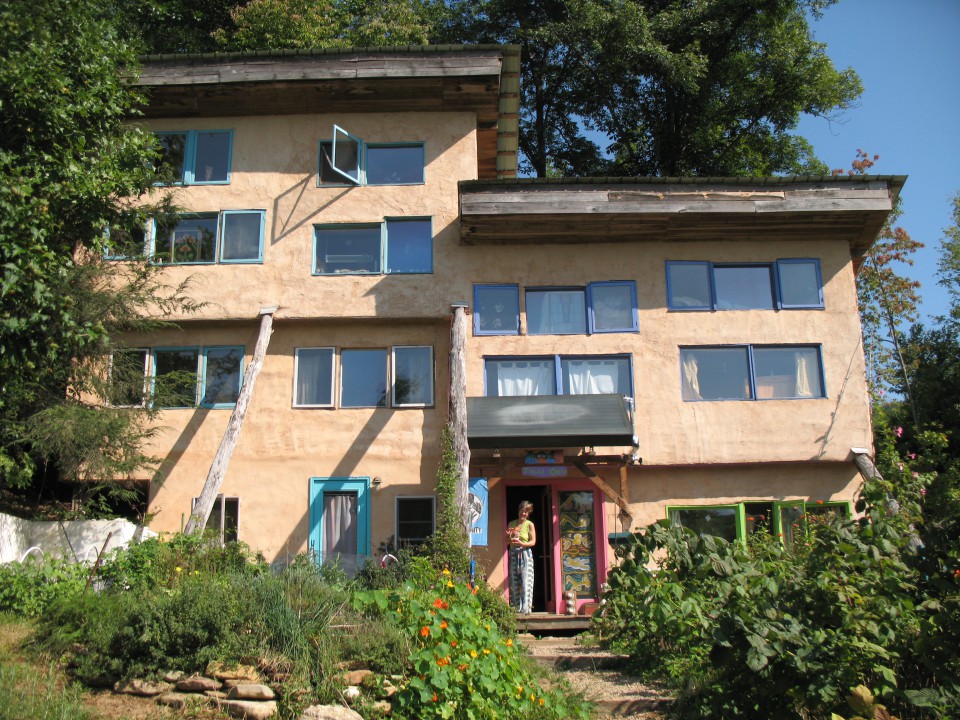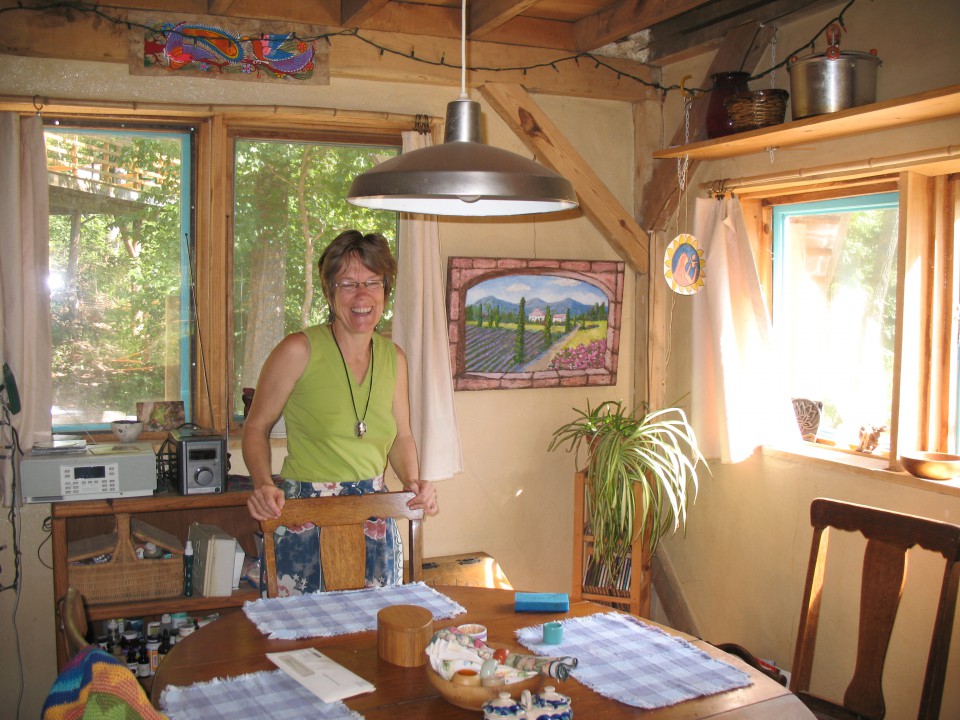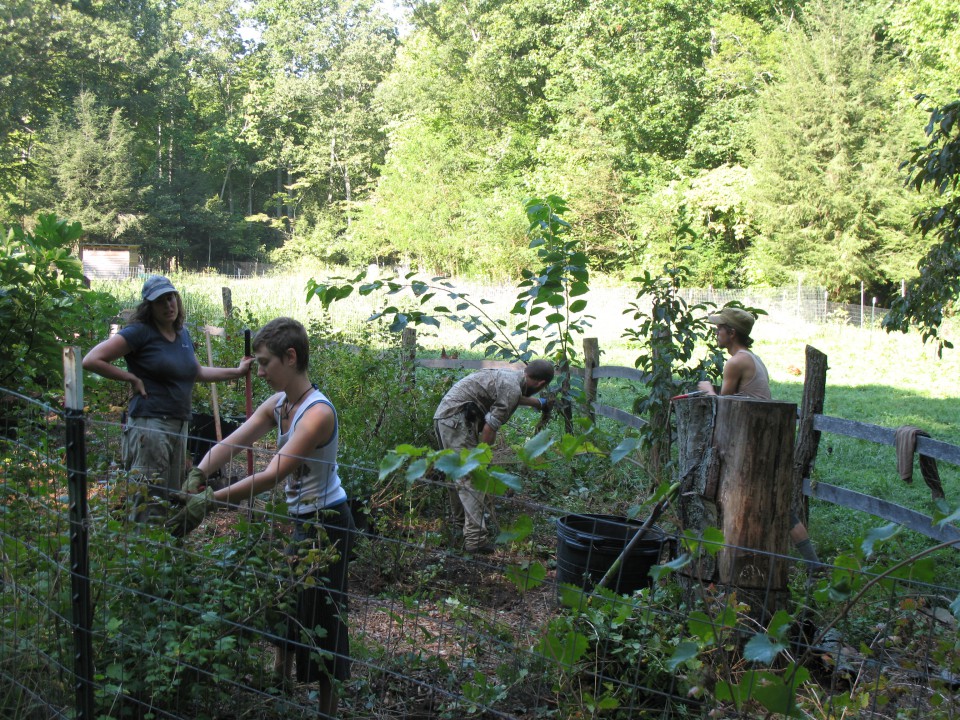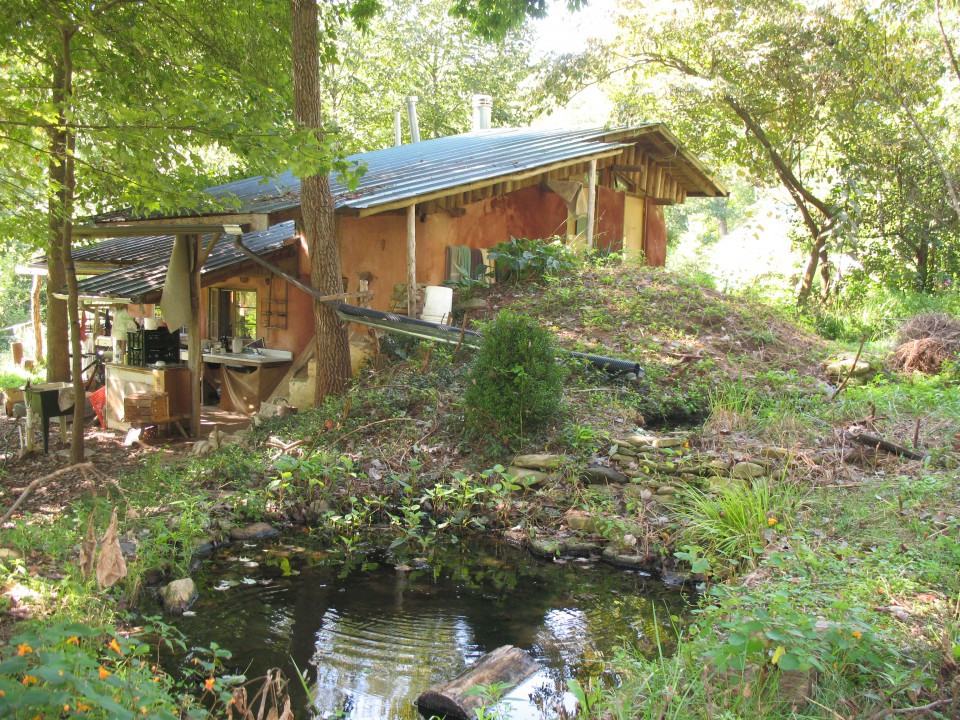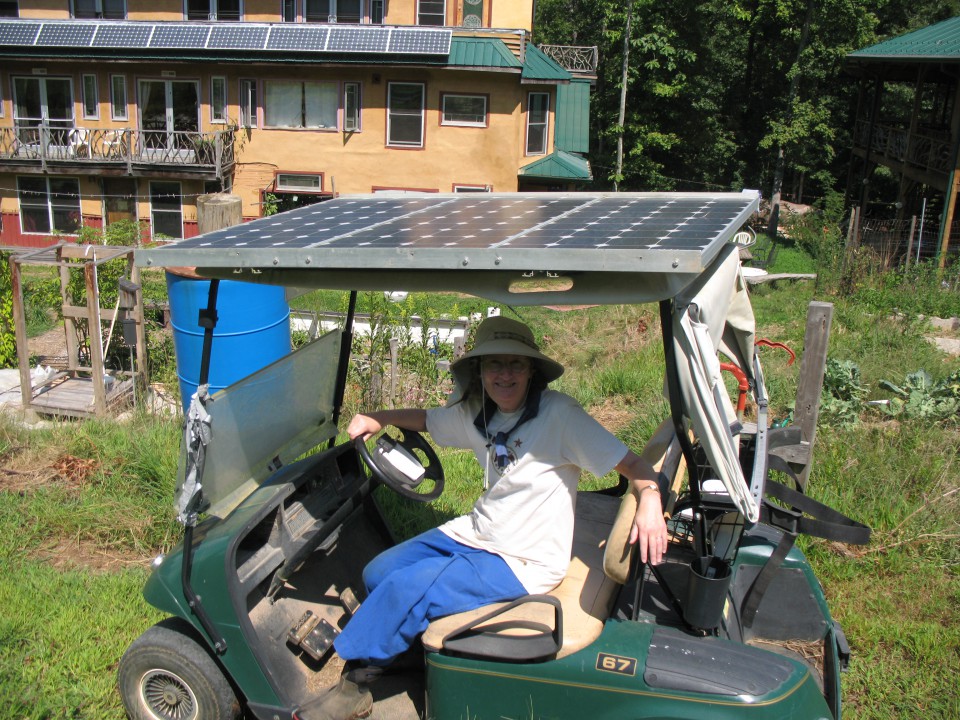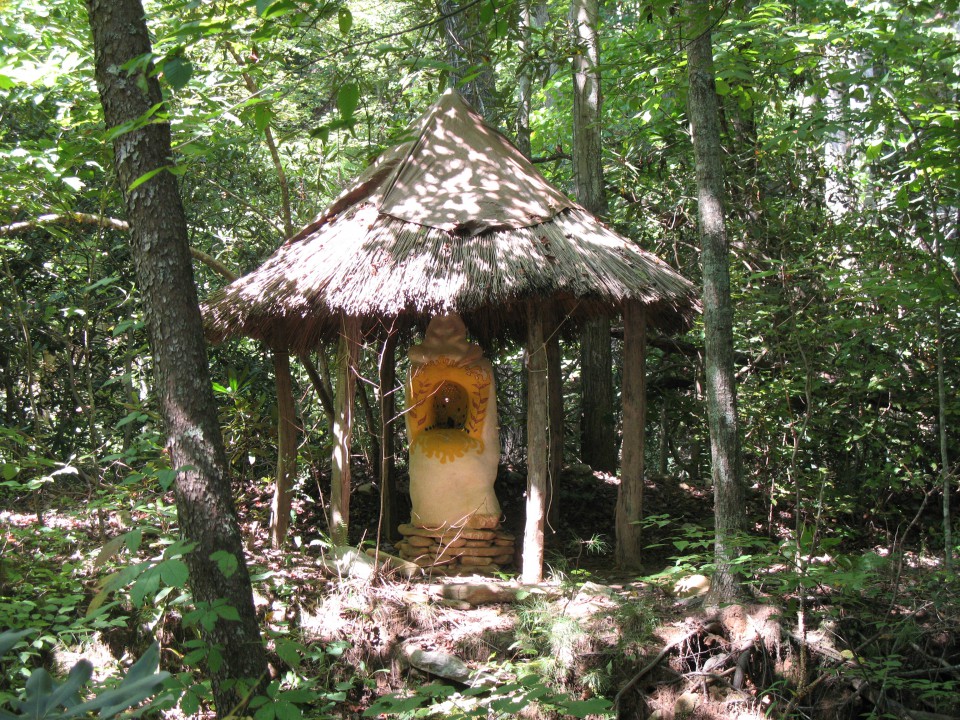Earthaven
My first stop was Earthaven, a picturesque 320-acre off-grid community and educational center nestled in the Blue Ridge Mountains of North Carolina.
Established in 1994, Earthaven aspires to be “a living laboratory and educational seed bank for a sustainable human future.” Its roughly 60 members share an affinity for permaculture and aim to become a self-sustaining village of 150 living on 56 home sites.
I was thoroughly impressed by what Earthaven had created in 15 years: a rapidly evolving expertise in forestry, a range of natural building styles, 100% energy and water self-sufficiency, and several thriving farms—all in what was once raw forest.
Yet the community was emerging from a rocky period in which a few members were continually blocking the community consensus. When I arrived, Earthaven was reassessing its decision-making structure. In the end, they adopted a modified consensus rule: a block is declared invalid if 85% of Council members believe it to be so.
Earthaven’s experience reinforced my own belief that social sustainability is the foundation for ecological sustainability. It also led the community to preface its list of eleven goals with Goal Zero: To promote and ensure the long-term structural integrity of the community.
As part of its educational mission, Earthaven publishes a blog and a quarterly newsletter.
Official site: http://www.earthaven.org/
Virtual tour http://www.earthaven.org/videos/#2
